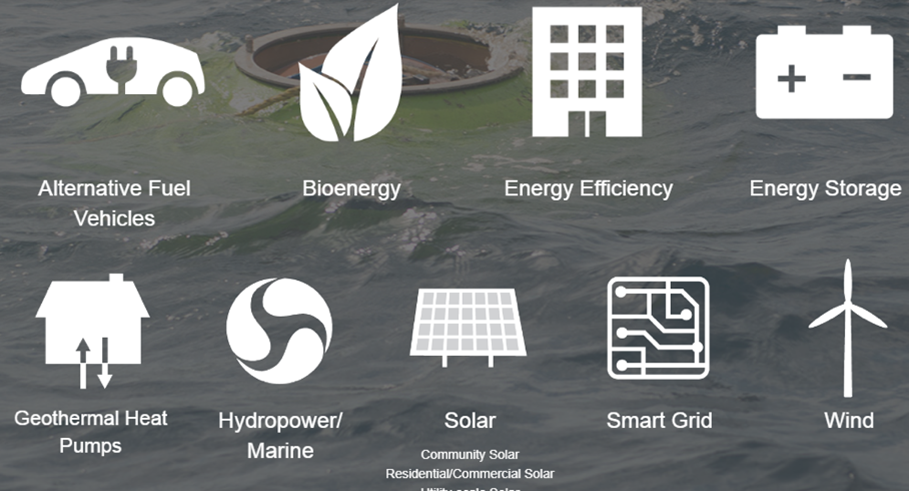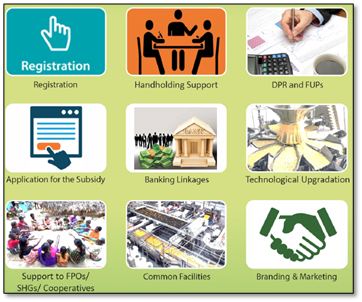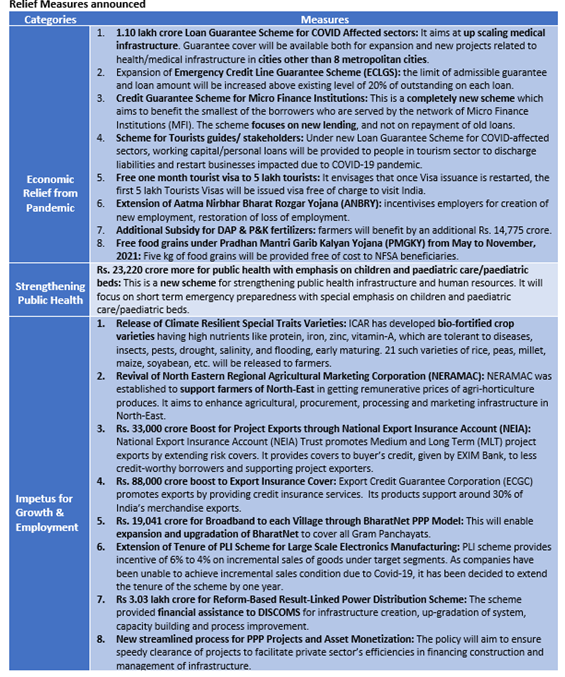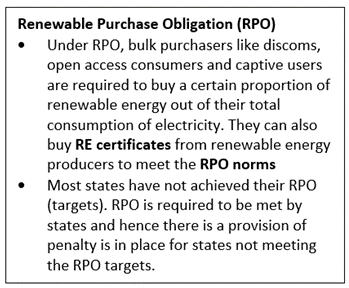Thursday, 1st July 2021
India to become Aatmanirbhar in Phosphatic Fertilisers
In News
Department of Fertilisers is ready with an Action Plan to make India Aatmanirbhar in Rock Phosphate, the key raw material of DAP and NPK Fertilizers.
About the Action Plan
- Action plan is directed to commercially exploit and ramp up the production in the existing 30 lakh MT of Phosphorite/ Rock Phosphate deposits which are available in Rajasthan, central part of peninsular India, Hirapur(MP), Lalitpur(UP), Mussoorie syncline, Cuddapah basin(Andhra Pradesh).
Need for Action Plan
- Rock Phosphate is the key raw material for DAP and NPK fertilisers and India is 90% dependent on imports. The scarcity of domestic raw material constrains the attainment of self-sufficiency.
- Volatility in international prices affects domestic prices of fertilisers and hinders the progress and development of agriculture sector in the country.
Domestic Reserves of Rock Phosphate
- As per Indian Minerals Yearbook 2019, the total reserves of rock phosphate has been placed at 312.67 million tonnes. Out of these, the reserves constitute only 45.80 million tonnes while 266.87 million tonnes are under Remaining Resources category.
- Of the total reserves/ resources, 34% are in Jharkhand, 31% in Rajasthan, 19% in Madhya Pradesh, 8% each in Uttar Pradesh & Uttarakhand, respectively. Meagre quantities of resources are also located in Gujarat and Meghalaya.
- Grade wise - Low-grade account (37%), followed by Beneficiable grade(29%).
Phosphorite/Rock Phosphate Production
- The total production of phosphorite/rock phosphate at 1,285 thousand tonnes in 2018-19 decreased by 15% as compared to that in the previous year.
- Rajasthan continued to be the principal producing State contributing 92% of the total production and the remaining 8% share was contributed by Madhya Pradesh.
Need of Phosphatic Fertilisers
- Phosphorus is an essential nutrient required for plant growth. It helps in root development, plant maturation, and seed development. Along with nitrogen and potassium, phosphorus is one of the most important elements for plant life.
- Soil gets depleted of phosphorus due to several reasons including being washed away by rain. Therefore, modern farming is reliant on the use of phosphorus-based fertilizers.
Steps taken to ensure availability of fertilizers to farmers at subsidized prices
- Government is making available fertilizers, namely Urea and 22 grades of Phosphatic & Potassic (P&K) fertilizers including Di-ammonium Phosphate (DAP), Muriate of Potash (MOP) & Single Superphosphate (SSP) to farmers at subsidized prices through fertilizer manufacturers/ importers.
- The subsidy on P&K fertilizers is being governed by Nutrient Based Subsidy (NBS) Scheme. The subsidy is released to fertiliser companies as per NBS rates so that they can make available fertilisers to farmers at affordable price.
- In case of Phosphate Fertilizer Industry, a policy has been adopted which involves the following three options: 1. domestic production based on indigenous imported rock phosphate and imported sulphur. 2. domestic production based on imported intermediates, viz, phosphoric acid. 3. imports of finished fertilizers.
https://pib.gov.in/PressReleaseIframePage.aspx?PRID=1730947
https://ibm.gov.in/writereaddata/files/07072020143656Apatite_RPH_2019.pdf
NITI Aayog study on 'Not-for-Profit' hospital model
In News
The NITI Aayog released a comprehensive study on the not-for-profit hospital model in the country, as a step towards closing the information gap on such institutions.
About the News
- As per the NITI Aayog, investment in the expansion of the health sector in private domain has been relatively low and the recent stimulus announced by the government provides the country an opportunity to change this situation.
- Private hospitals are largely divided into “for-profit hospitals,” which account for 3% of treated ailments and “not-for-profit hospitals,” which account for only 1.1% of treated ailments, as of June 2018. The for-profit hospitals account for 55.3% of in-patients, while the not-for-profit hospitals account for only 2.7% of in-patients in the country, according to the findings of the NSS 75th round survey on Health in India.

What is a Not-for- Profit Hospital?
A not-for-profit hospital does not make profits for its owners from the funds collected for patient services. The owners of these hospitals are often charitable organizations or non-profit corporations. These hospitals are a potential remedy to the challenges of unavailability and unaffordability of healthcare in India.
Challenges Faced by the Not-for-Profit Hospitals
- Recruitment and retention of doctors & staff: Most of the hospitals find it difficult to recruit and retain doctors and staff because of lower salaries, remoteness of location of the hospitals.
- Reimbursements for treatment of Government health scheme beneficiaries: These hospitals have cited perennially delayed reimbursements and long-pending amounts.
- Infrastructure and equipment expansions: High dependency on external funding in the form of philanthropy and grants and delay in expansion project approvals from regulatory bodies.
- Regulatory challenges: Challenges due to high compliance burden of staffing requirements of the Regulations for running a blood bank, Clinical Establishments Act, PNDT Act, and Quality standards.
Source: http://niti.gov.in/sites/default/files/2021-06/Not-for-profitHospitalReport.pdf
Initiative to Advance Deep Tech-based Research in India
In News: Science and Engineering Research Board (SERB), a statutory body of Department of Science and Technology (DST), has partnered with Intel India to launch first-of-its-kind initiative to advance deep tech-based research in India.
SERB-FIRE Initiative
- The FIRE (Fund for Industrial Research Engagement) program is a joint government and industry initiative with a co-funding mechanism to promote innovative technology solutions and strengthen academic research through collaboration with key research and development (R&D) organizations in India.
- This is a critical program that will lead to impactful research outcomes in key technology areas like AI, machine learning, cloud, edge, and security at the national and global scale.
- The program intends to select highly impactful research projects in every cycle (typically once or twice a year), which have breakthrough potential at a national or global level.

Significance of the Partnership
- It promises to bring support for strong ideations, especially in futuristic S&T thematic areas, and aims to bring expertise in academia and industry together with a new model of cooperation.
- There is a synergy that could be built upon through this initiative which would be governed by industry-specific problems.
Technology based Research Ecosystem in India
- India is one of the top-ranking countries in the field of basic research.
- There has been had a strong focus on science and technology and technology-based research for the past two decades, realizing that it is a key element for economic growth.
- However, investment in research and innovation in India currently stands at about 0.7% of GDP as compared to 4.3% of GDP in a small country like Israel.
- From a stagnant range of 0.6% to 0.7%, India should focus on significantly enhancing this percentage of expenditure to at least 2% by 2022.
Primary source: https://pib.gov.in/PressReleasePage.aspx?PRID=173118
Picture Source: http://indpaedia.com/ind/index.php/Research_%26_Development(R%26D):_India
https://hitech-health.com/research-development-manager-cgt-galway/
Private Sector in Clean Energy
In News
Reliance Industries Limited has announced to invest Rs 75,000 cr in clean energy, build 4 giga factories.
About the News
- Reliance Industries will invest $10.1 billion in clean energy over three years in a drive to become a net carbon zero company by 2035. It will invest 600 billion rupees to build four 'giga factories' at Jamnagar to produce solar cells and modules, energy storage batteries, fuel cells and green hydrogen.
- Adani Group has also expressed to align with India’s goal of becoming the world’s biggest player in renewable energy and aspires to become the world’s largest solar power producer by 2025 and later world’s largest renewable power company by 2030.

What is Clean Energy?
- Clean energy is the energy derived from renewable, zero-emissions sources as well as energy saved through energy efficiency measures. To be truly clean the carbon cost of production and storage needs to be zero, and this is where sources such as solar power and wind energy are seen as being truly clean and renewable. A clean energy economy powered by both renewables and energy efficiency is the most sustainable energy planning scenario available.
- Difference between Clean and Renewable Energy: Clean energy is energy that keeps a check on greenhouse gases during its production, although it is not necessarily renewable. So, while some forms of renewable energy is also “clean energy”, so is nuclear power as it does not create any carbon emissions or pollutants during generation.
- Renewable energy is power generated from sources that are constantly being replenished. Not all renewable energy sources are clean. For example, burning wood from sustainably managed forests can be renewable, but it is not clean since this releases carbon dioxide into the atmosphere.
Current Status of Clean Energy in India
- India’s nascent clean energy sector is full of opportunities and is constantly growing. According to the Indian Brand Equity Foundation, India could see investments of around $500 billion in its new energy industry by 2028.
- India is running the world’s largest clean energy programme to achieve 175 GW of renewable capacity, including 100GW of solar power and 60 GW of wind power by 2022. A lot is riding on such projects to help India meet its climate change commitments.
Why is the entry of Private players in the Clean Energy an inevitability?
- Opportunity for the Private Sector:
- Access to New Markets: Revenue growth can be derived in activities aiming to increase access, efficiency and use of clean energy through innovation and product design, expansion to provide access to new markets and widening the existing customer base.
- Brand Enhancement: Business value can be created in the energy sector through brand enhancement. This refers to building a brand that associates positively in the minds of consumers because of the positive linkages to usage of clean energy sources.
- Reducing Vulnerability: Use of clean energy source can support private sector operators in making them less vulnerable to risks related to fluctuations in fuel price or regulatory changes issuing new carbon restrictions.
- Limitations of Governments: The challenge of climate change is too large for national governments to tackle alone. Close collaboration with the private sector can allow nations to make progress regardless of which way the political winds blow. With global public debt running at an all-time high of over 80% of global GDP, it will increasingly fall to the private sector to make the critical investments in smart new energy infrastructure.
- Global challenges require global solutions: The production and use of energy currently is responsible for 73 percent of all global emissions. Extreme weather, widespread crop failure, species extinction and sea-level rise are all aspects of our changing climate being felt by communities and businesses across the globe. So, focus is required from industry and government alike to deliver energy to a world that desperately needs it.
What can be possible challenges due to entry of Private players?
- Lack of Enabling Policies: Lack of enabling policy and regulatory frameworks that prioritize and appropriately incentivize clean energy technologies. The absence of long-term climate and renewable energy policies and targets create unclear market signals for investors and developers.
- Project Development Risk: Jurisdictions with significant fossil fuel infrastructure and employment face near-term political challenges for transitioning to clean energy. Potential land-use conflicts can occur between new clean energy developments, existing local industries, and conservation needs and can result in environmental degradation.
- High Cost: Most clean energy sources, especially wind and solar PV, have high investment costs but low operating and maintenance costs. Once operational, renewables projects with long-term power purchase contracts can provide stable revenues to investors while sheltering buyers from future electricity and fuel price volatility.
- Grid infrastructure problems: Electric power grids function only when the supply of power exactly matches demand, at every moment of every day. Intermittent clean energy resources like solar and wind produce power variably. So, most power grids will require major changes and upgrades to their physical infrastructure, planning and operations, and electricity market structures to accommodate clean energy sources.
Way Forward
- Establish Long Term Targets: Establish mandatory climate and clean energy targets and binding policies at the national or subnational levels. Complement targets with structures and incentives to create an enabling environment for clean energy development.
- Inclusive and Transparent Planning: Engage local stakeholders early on, in public processes that are transparent, inclusive, and sincere about addressing community needs. Establish clear permitting and siting processes for clean energy infrastructure that explicitly address environmental and social impacts. Collaborate with stakeholders early in the process to identify possible land or marine competition and users
- Flexibility of Grid Structure: Facilitate development of new grid infrastructure. Complement upgrades to physical infrastructure with technological, operational, and market enhancements.
- Local level Awareness: Transition policies enabling communities to play an active role to take fuller advantage of the socio-economic benefits of the energy transformation, including jobs and local value creation.
Question: What is Clean Energy? Analyse the challenges and opportunities for clean energy production in India.
Primary Sources: https://www.weforum.org/agenda/2020/01/energy-transition-private-sector-climate/
https://www.weforum.org/agenda/2020/01/india-new-hotspot-renewable-energy-investors
http://www.cleanenergyministerial.org/about-clean-energy-ministerial
https://www.twi-global.com/technical-knowledge/faqs/clean-energy
Secondary Sources: https://www.americanprogress.org/issues/general/news/2009/10/27/6834/idea-of-the-day-the-role-of-public-and-private-sector-in-the-clean-energy-economy/
https://www.saurenergy.com/solar-energy-news/adani-ramps-up-renewables-ambition-for-group
https://www.indiafilings.com/learn/national-clean-energy-and-environment-fund-nceef/
https://www.adb.org/what-we-do/funds/clean-energy-fund
This Day in History- National Doctors’ Day
July 1 is celebrated as National Doctors’ Day in India, to mark the birth and honour the contributions of renowned physician and former West Bengal chief minister Dr Bidhan Chandra Roy. He was awarded with the Bharat Ratna on February 4, 1961. He played a very important role in creation of Indian Medical Association and the Medical Council of India. The first National Doctors’ Day was celebrated in the year 1991. For 2021, the day is to be observed to recognise the efforts of all the doctors and healthcare workers who are putting their lives at risk in these hard times, whether in main and secondary care settings or in committed Covid care facilities.

Image of the Day- Upper Atmosphere Cooling and Contracting
This is the image of Upper Atmosphere Cooling and Contracting by NASA Satellites due to Climate Change. Together, the satellites provided about 30 years of observations, indicating that the summer mesosphere over Earth’s poles is cooling four to five degrees Fahrenheit and contracting 500 to 650 feet per decade. Without changes in human carbon dioxide emissions, the researchers expect these rates to continue. Since the mesosphere is much thinner than the part of the atmosphere we live in, the impacts of increasing greenhouse gases, such as carbon dioxide, differ from the warming we experience at the surface. Only little of Earth's heat makes it to the higher, thinner mesosphere.

NATRAX- the High-Speed Track (HST)
- Context: inauguration of NATRAX- the High-Speed Track (HST) in Indore, Madhya Pradesh.
- NATRAX (National Automotive Test Tracks) is one of the state-of-the-art automotive testing and certification centers under NATRIP (National Automotive Testing and Research and development (R&D) Infrastructure Project), a flagship project of the Ministry of Heavy Industries.
- It is developed in an area of 1000 acres of land and is a one stop solution for all sorts of high-speed performance tests for widest categories of vehicles from 2 wheelers to heavy tractor trailers.
- It is the longest such track in Asia and the fifth longest in the world.
- The NATRAX center has multiple test capabilities like measurements of maximum speed, acceleration, constant speed fuel consumption, emission tests etc. and is a Centre of excellence for Vehicle Dynamics.

Primary source: https://www.jktyre.com/pressreleasedetails.aspx?id=wcgZZyoxpYE=
https://pib.gov.in/PressReleasePage.aspx?PRID=1731122
Picture source: https://www.theweek.in/news/biz-tech/2021/06/29/asias-longest-high-speed-test-track-natrax-inaugurated-at-indore.html
Energy Compacts
- Context: NTPC Limited has become the first energy company in energy domain in India to declare its Energy Compact goals.
- NTPC is India’s largest power generating company under Ministry of Power.
- Energy Compacts are voluntary commitments from Member States and non-state actors, such as companies, regional/local governments, NGOs, and others.
- These stakeholders commit to an Energy Compact that includes the specific actions they will take to support progress on SDG7 (affordable, reliable, sustainable and modern energy for all by 2030).

Primary source: https://www.un.org/sites/un2.un.org/files/i._updated_flyer_v._8_april.pdf
Picture source: https://mobile.twitter.com/UN_Energy/status/1374887945686093827
Bharitalasuchus tapani
• Context: Recent fossil studies in India have thrown light on Bharitalasuchus tapani, a carnivorous reptile that lived 240 million years ago.
• Bharitalasuchus tapani were robust animals with big heads and large teeth, and these probably predated other smaller reptiles.
• They were approximately the size of an adult male lion and might have been the largest predators in their ecosystems.
• In the Telugu language, Bhari means huge, Tala means head, and Suchus is the name of the Egyptian crocodile-headed deity. The species is named after paleontologist Tapan Roy Chowdhury.
• The reptile belonged to a family of extinct reptiles named Erythrosuchidae.

Primary source: https://www.thehindu.com/sci-tech/science/meet-bharitalasuchus-tapani-a-carnivorous-reptile-that-lived-240-million-years-ago/article34799013.ece
Picture source: http://novataxa.blogspot.com/2021/05/bharitalasuchus.html
Heat Dome in North America
- Context: NASA satellite photos have shown ‘exponential’ heat dome in North America.
- Heat dome is an area of high pressure that settles over a region like a lid on a pot, trapping the underlying heat.
- High pressure way up in the atmosphere can trap heat, leading to an increase in temperatures at ground level which is fuelled by heat rising from the ocean.
- They are more likely to form during La Nina years like 2021 when waters are cool in the Eastern Pacific and warm in the Western Pacific.

Primary source: https://www.nationalgeographic.com/environment/article/heat-dome-deadly-hot-weather-descends-on-pacific-northwest
Picture source: https://oceanservice.noaa.gov/facts/heat-dome.html
How police can serve citizens better
Essence: This editorial is focusing upon the emergent need of pending police reforms & their close link with nations progress in economic, social, and political spheres. Economic cost of the failed criminal justice system is reflected in the reluctance of foreign companies to set up manufacturing and commercial ventures in India. Social implications can be gauged from the report, “Crime in India 2019”, published by the National Crime Records Bureau.
Investigation and prosecution need improvement and all criminal trials must be completed within a year. Technology-driven service delivery mechanisms can help achieve this. However, the procedures are non-transparent, and timelines are often blurred. India Justice Report (IJR) 2020 mentions that “despite the push for digitisation, no state offered the complete bouquet of services… Users face numerous problems of accessibility to these services. Adhering to a defined process with a timeline and clear delineation of the levels of police officers involved can ensure transparent and non-corrupt service delivery.
Why you should read this article?
- To know the implications/cost of pending police reforms on our economy & society.
- To know about the works done by police department apart from maintaining law & order.
- It is also providing examples of some tech driven positive steps taken to better the service deliery.
- You can expect one question on police reforms in GS paper - 2, Mains. This article is providing crisp fodder points.
Article Link: https://indianexpress.com/article/opinion/columns/police-reforms-supreme-court-national-crime-records-bureau-7383390/
Campaign against soil degradation: Quelimane Municipality
Background:
- The Quelimane Municipality (Mozambique) has launched a campaign against dumping of waste and soil degradation in order to improve the quality and quantity of local food.
It is indeed a campaign:
- It focusses not only on strengthening urban and peri-urban resilience but aims to rethink the entire food supply chain sustainably.
- It encapsulates regeneration of soil, using more sustainable agricultural techniques, creation of infrastructure like rainwater drainage, watershed.
- It highlights the need to improve public services and modification of transportation involved in selling and disposal of food.
- The project strengthens the capacity of the waste collection services, re-designed the primary food market to improve the collection of waste
Outcome:
- Better Land: It resulted in safer land to cultivate and high-quality food products.
- Improved waste management: It improved the waste management by focussing upon the aspect like reduce and recycle the waste
- Organic Agriculture: It increased the use of compost among farmers and promoted organic farming
- Better agricultural harvest: It improved the quality of the urban agricultural harvest
Things to ponder:
- Can we relate the campaign by Quelimane Municipality to the social forestry and agro-forestry campaign in India? Are the components similar
- Think upon the factors which contribution to the success of social forestry. Also try to recollect the limiting factors.
Source: https://www.unccd.int/actionsland-life-programme/land-life-award-2021-healthy-land-healthy-lives
Share the article
Get Latest Updates on Offers, Event dates, and free Mentorship sessions.

Get in touch with our Expert Academic Counsellors 👋
FAQs
UPSC Daily Current Affairs focuses on learning current events on a daily basis. An aspirant needs to study regular and updated information about current events, news, and relevant topics that are important for UPSC aspirants. It covers national and international affairs, government policies, socio-economic issues, science and technology advancements, and more.
UPSC Daily Current Affairs provides aspirants with a concise and comprehensive overview of the latest happenings and developments across various fields. It helps aspirants stay updated with current affairs and provides them with valuable insights and analysis, which are essential for answering questions in the UPSC examinations. It enhances their knowledge, analytical skills, and ability to connect current affairs with the UPSC syllabus.
UPSC Daily Current Affairs covers a wide range of topics, including politics, economics, science and technology, environment, social issues, governance, international relations, and more. It offers news summaries, in-depth analyses, editorials, opinion pieces, and relevant study materials. It also provides practice questions and quizzes to help aspirants test their understanding of current affairs.
Edukemy's UPSC Daily Current Affairs can be accessed through:
- UPSC Daily Current Affairs can be accessed through Current Affairs tab at the top of the Main Page of Edukemy.
- Edukemy Mobile app: The Daily Current Affairs can also be access through Edukemy Mobile App.
- Social media: Follow Edukemy’s official social media accounts or pages that provide UPSC Daily Current Affairs updates, including Facebook, Twitter, or Telegram channels.





